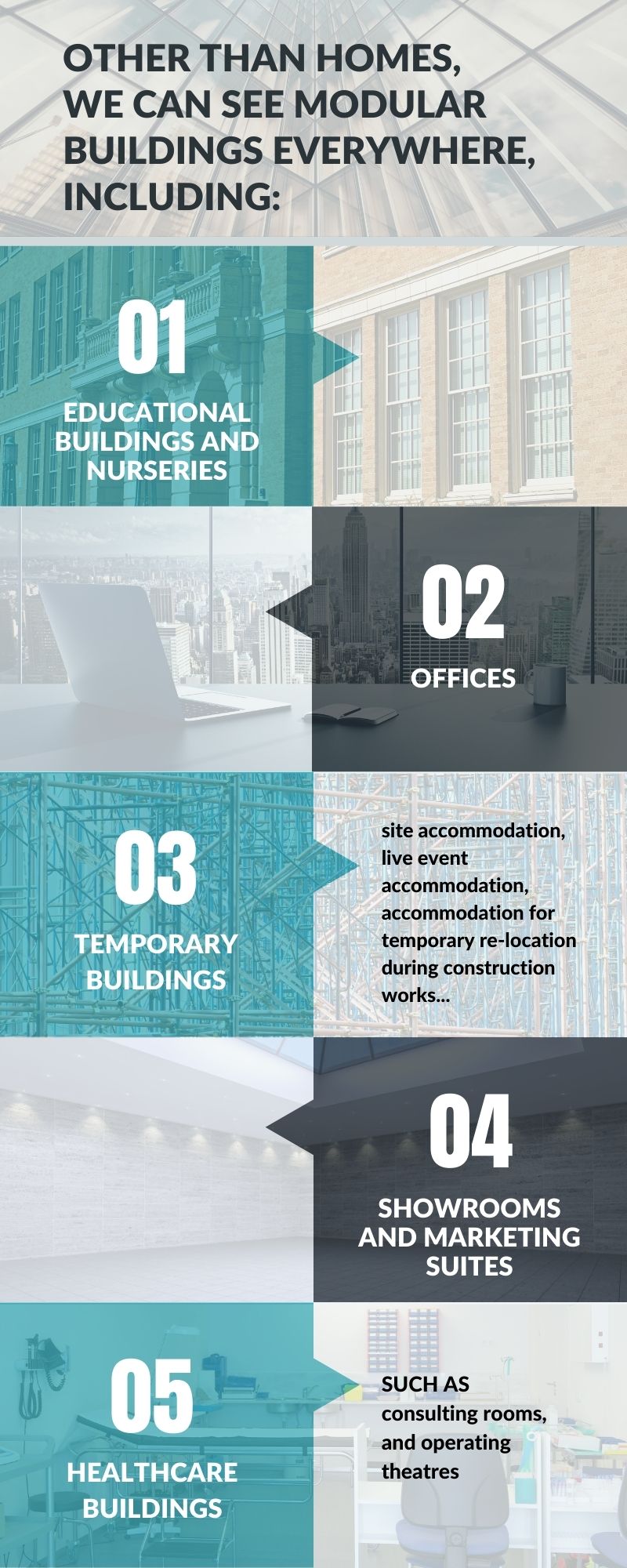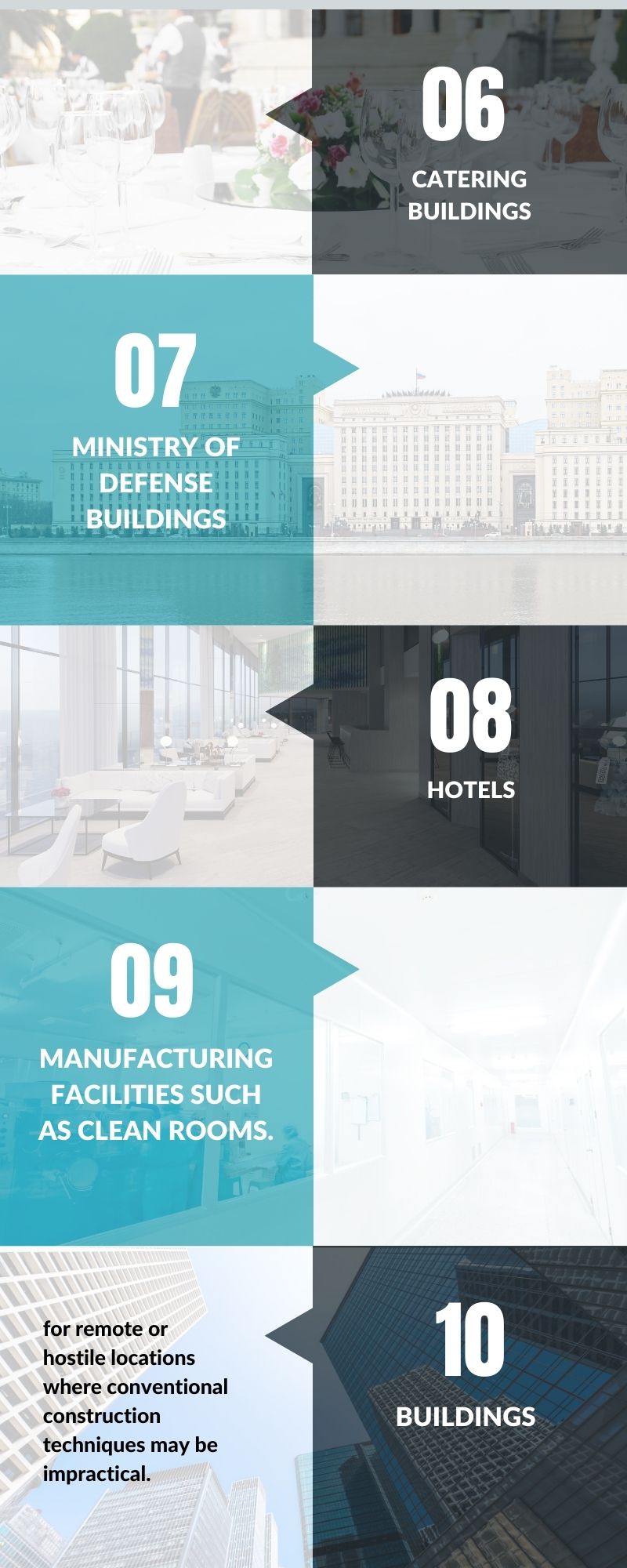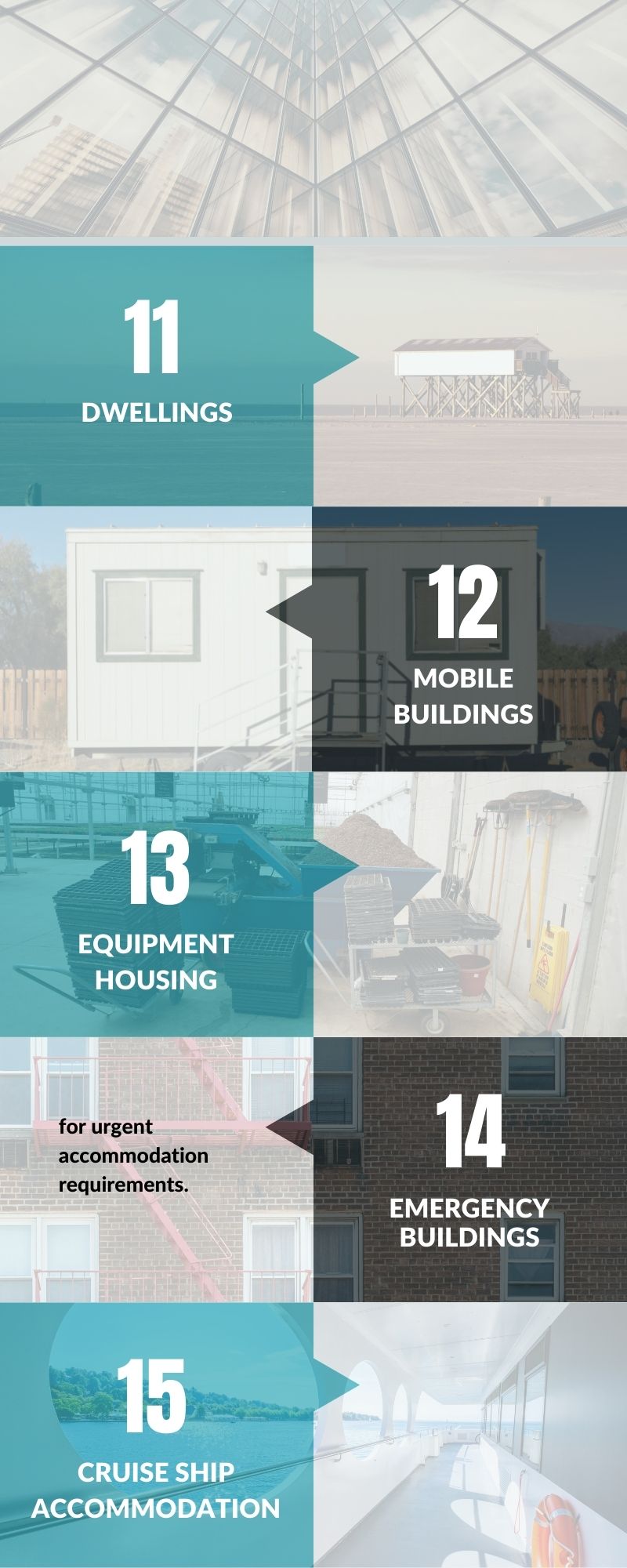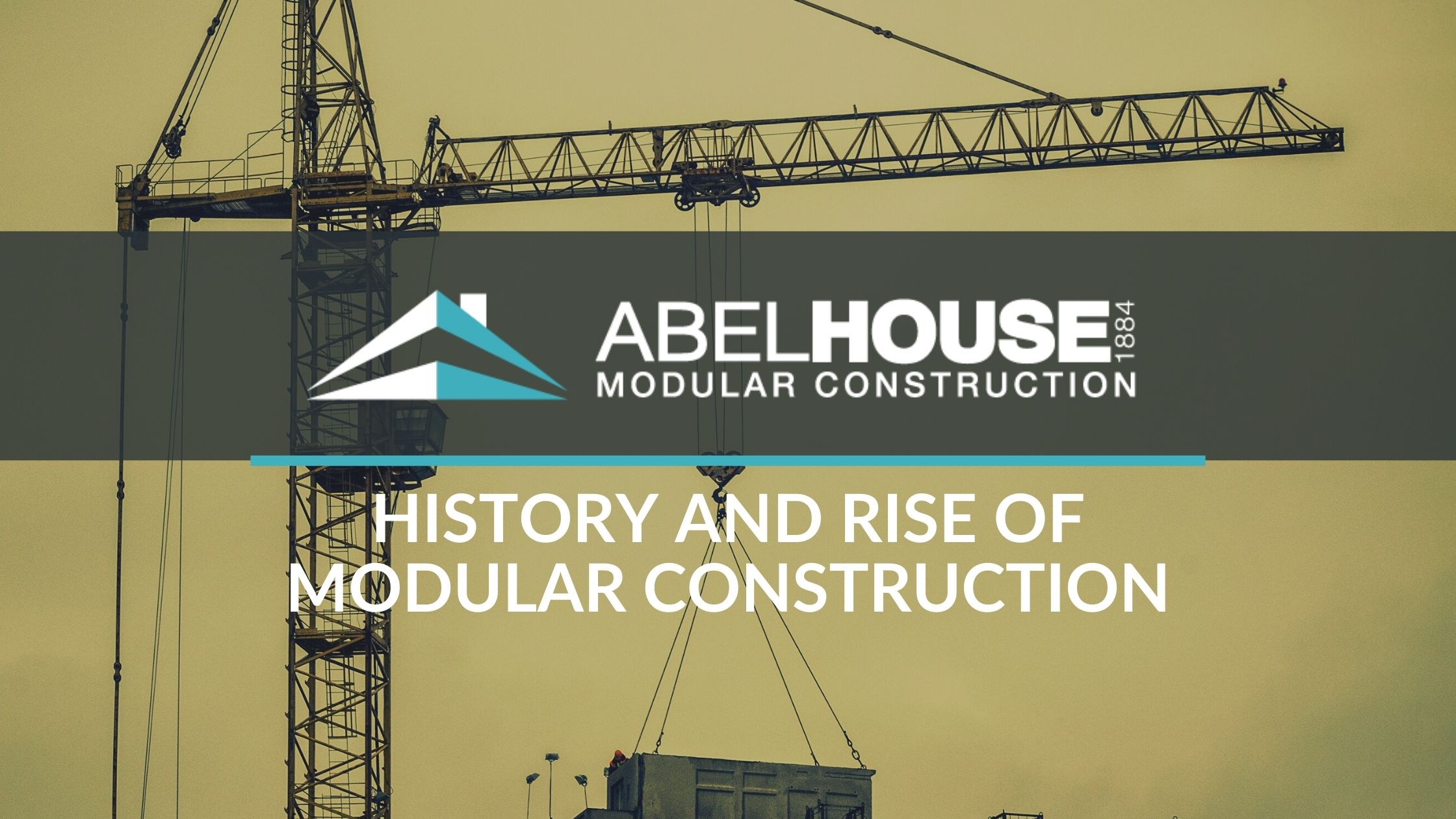
A modular building is a prefabricated building that consists of repeated sections called modules. Modularity involves constructing sections away from the building site, then delivering them to the intended site, where installation of the prefabricated sections is completed.
Buildings are produced in “modules” that when put together on site, reflect the identical design intent and specifications of the most sophisticated site-built facility – without compromise.
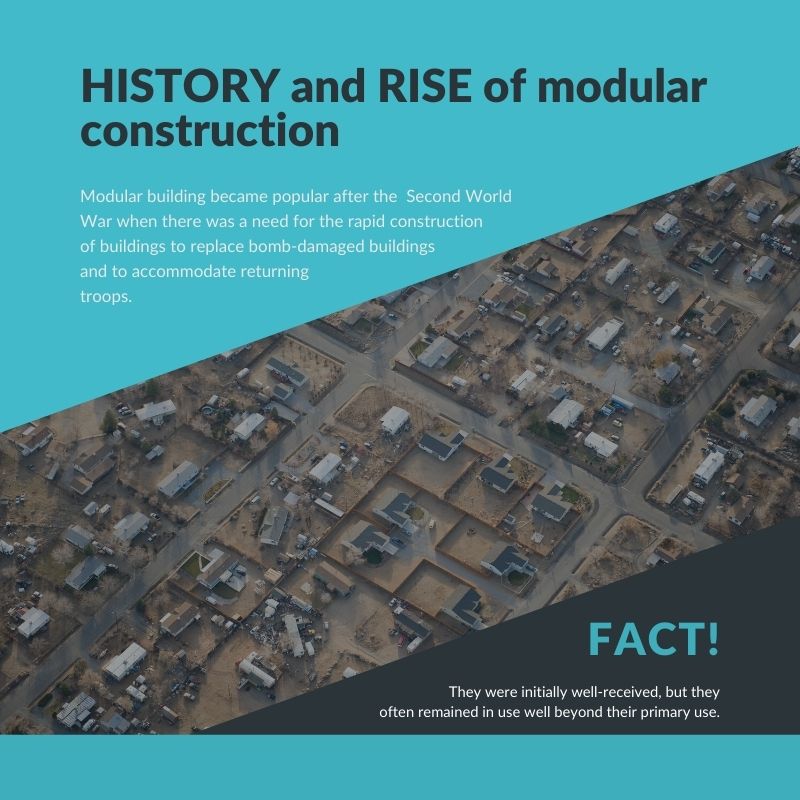
Modular building became popular after the Second World War when there was a need for the rapid construction of buildings to replace bomb-damaged buildings and to accommodate returning troops. They were initially well-received, but they often remained in use well beyond their primary use.
More recently, there has been a resurgence of interest in modular buildings, with a recognition, not only that they can be aesthetically pleasing, but also, they can achieve a very high build quality and can be both long lasting and sustainable.
Easier construction management, improvement of the safety and security, sustainable designs, and substantial reduction in the construction period led to a new fleet of modular buildings that includes a wide variety of sizes and configurations.
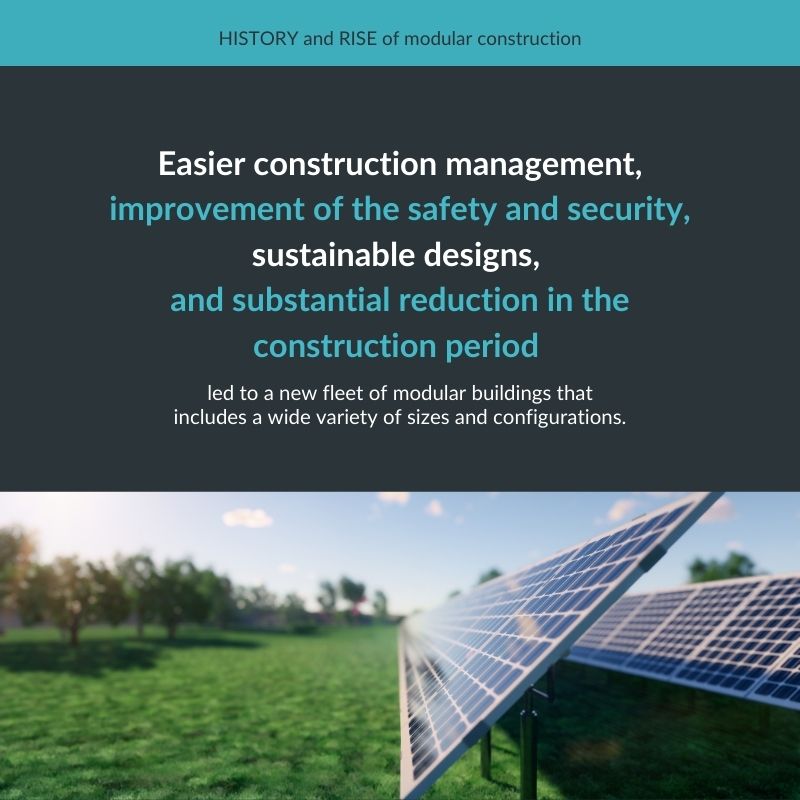
The gap between modular structures and traditional buildings has narrowed, and there has been an improvement in performance driven in part by regulatory standards, but also by the availability of new technology and materials.
 The great advances in technology inspired a new generation of architects to return to the concept of experimental modular housing.
The great advances in technology inspired a new generation of architects to return to the concept of experimental modular housing.
Today, the modular construction industry is booming all around the world, doubling in size, over the last five years. Developed mainly because of soaring land and property prices, modular construction has reached even the hotel sector. In fact, in this field, modular buildings ensure that the quality of the building will meet the specific standards set by investors, saving time and money as well as maintaining control over the traditional fit-out process.
The advantages of modular buildings:
Other than homes, we can see modular buildings everywhere, including:
- Educational buildings and nurseries.
- Offices.
- Temporary buildings (such as site accommodation, live event accommodation, accommodation for temporary re-location during construction works and so on).
- Showrooms and marketing suites.
- Healthcare buildings (such as consulting rooms, and operating theatres).
- Catering buildings.
- Ministry of Defense buildings.
- Hotels.
- Manufacturing facilities such as clean rooms.
- Buildings for remote or hostile locations where conventional construction techniques may be impractical.
- Dwellings.
- Mobile buildings.
- Equipment housing.
- Emergency buildings for urgent accommodation requirements.
- Cruise ship accommodation etc.
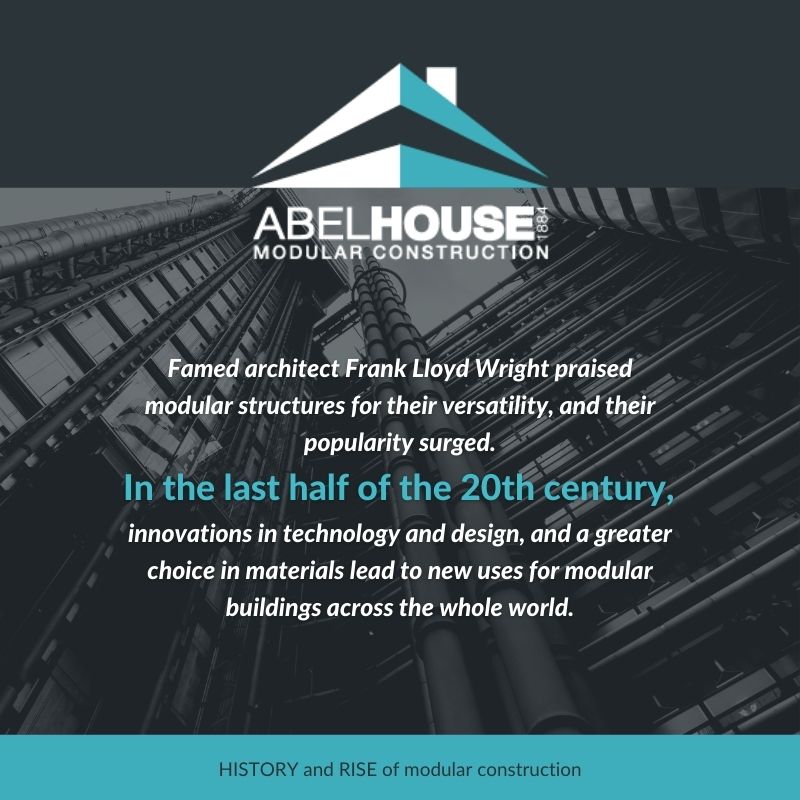
Famed architect Frank Lloyd Wright praised modular structures for their versatility, and their popularity surged. In the last half of the 20th century, innovations in technology and design, and a greater choice in materials lead to new uses for modular buildings across the whole world.
In recent years, the tiny house boom has breathed new life into modular buildings. Again, and again, people are discovering how modular homes can be friendly for both the environment and their budget. Modular buildings have a smaller ecological footprint and can be built with durability and unique character. Today you can buy a modular house for much less than one built on-site, and you can customize nearly every aspect.
New technology, like better construction cranes, have allowed modular buildings to be built bigger, taller, and in many designs. Units can be shipped across the country and can be put together on-site in a matter of days. In fact, in 2003, a McDonald’s restaurant was constructed in a record 13 hours. In the future, we can expect more and more people and businesses to embrace modular buildings for homes, offices, businesses and everything that hearth desire.
Modular construction opens the way for quicker development processes and this is primarily the reason why the market is booming. Recent modular projects have already established a solid track record of accelerating project timelines significantly and this type of construction is capturing market demand by light speed.
If you are interested in more information, contact us, we are here for you.
Your trusted home manufacturer – Your AbelHaus 1884
